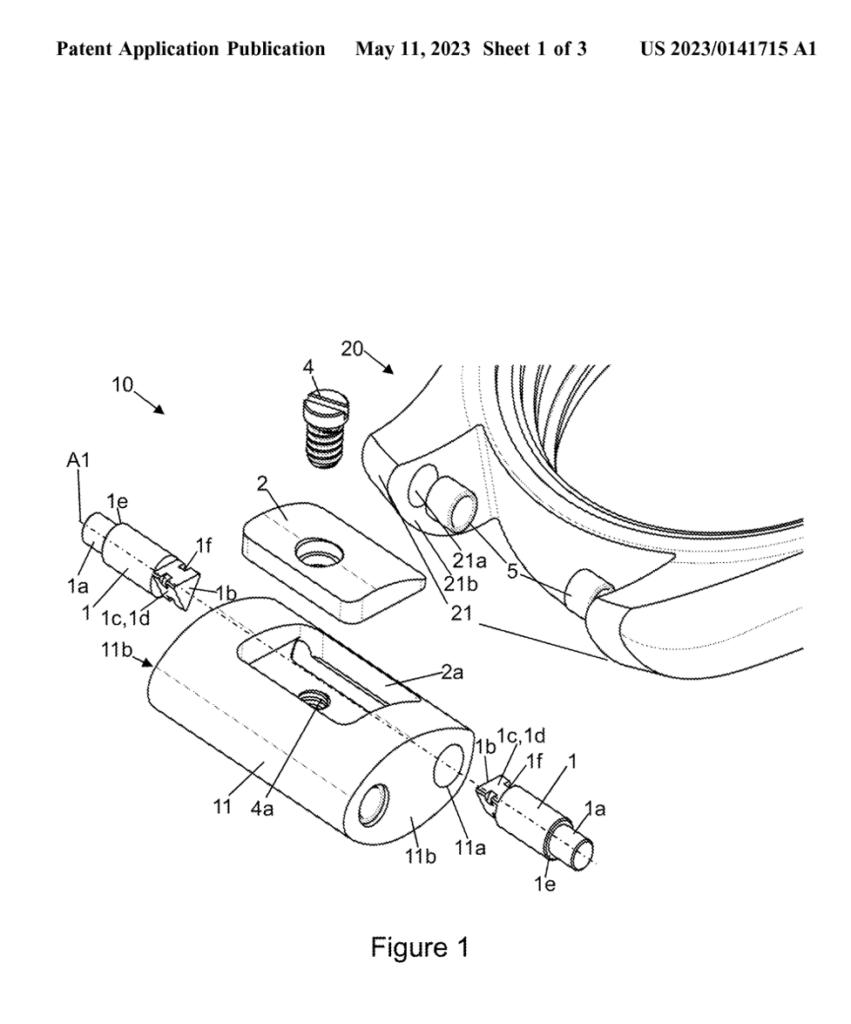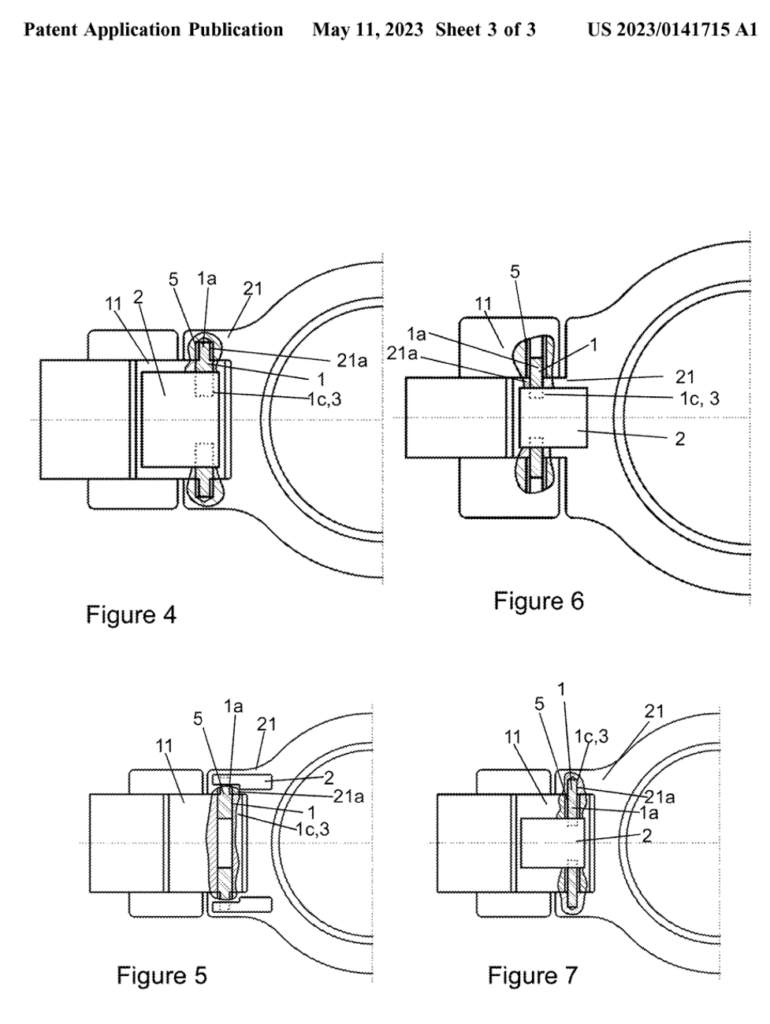Interesting Patents | Thursday, May 11, 2023

The United States Patent and Trademark Office (USPTO) grants hundreds of new patents every week, showcasing developments in technology and innovation. In our Interesting Patents series, we highlight exciting US patent applications and patents recently issued by the USPTO. The patent system enables the protection of innovative ideas, and newly published patent applications provide a glimpse into the future of technology and innovation.
In this edition of #InterestingPatents, we drive into the future with Rolex’s new patent application.
Looking for more information on patents? Want to run a free AI-Powered Prior Art Patent Search? We also offer useful Intellectual Property News & Resources with guides, videos, and insight on patents and inventorship. Think you might need a legal professional? Check out our Tips on Choosing a Patent Lawyer and contact us if you’d like a free consultation.
Assembly of a Wristband to a Watch Case
ASSIGNEE: Rolex
US PAT. APPL. NO. 17/974,352
Invention Overview:
In the realm of wristwatch technology, the quest for durability, functionality, and aesthetic appeal is relentless. Rolex has had a patent application published revealing their latest development to grace this industry. The patent application publication describes an innovative wristband attachment device designed to connect a wristband to a timepiece while drastically reducing frictional wear. This breakthrough design comprises a connecting element, a pin, a receiving element, and an insert, and it’s already making waves in the watchmaking world.
The Intricate Design
At the heart of the published patent application is at the connection mechanism, designed to attach either a wristband or a watch middle. It features at least one pin that can retract in relation to the connecting element. The receiving element for the pin is intended for connection to the watch middle or wristband and includes at least one bore. In essence, the device is capable of two configurations. In the first, the pin retracts into the connecting element, permitting the separation of the wristband from the watch middle. In the second, the pin projects from the connecting element and locates itself in the bore. This design’s secret weapon is the insert, forming a crucial interface between the pin and the bore or housing. This unassuming component dramatically reduces frictional wear during the rotation of the pin.
Versatile Application
A fantastic feature of this design is its versatility. The connecting element can take the form of a link when the wristband is an assembly of links. The connecting element can emulate the shape of other wristband links for a seamless aesthetic. When dealing with wristbands made from flexible materials like leather, the connecting element can be discreetly integrated into the wristband’s end. Alternatively, the fixing device can be positioned on a watch case, with the receiving element on the wristband, further reducing wear.
The Magic of Movement
A standout element of this design is the attached element. It can act on the pin during positioning or retraction, driving the pin in translation. This movement allows it to automatically move from its retracted position to its projecting position and vice versa. The pin, preferably made from ceramic (particularly sintered ceramic based on zirconia), plays a vital role in this design. The fixing device separates the wristband from the watch middle when the attached element is removed. However, when the attached element is fixed to the device, it assumes the second configuration.
Unique Features and Benefits
The design of this fixing device is packed with unique features and benefits. The insert’s ability to reduce frictional wear prolongs the lifespan of the wristwatch, providing a more durable and cost-effective solution for the user. The pin, made from sintered ceramic based on zirconia, enhances the overall resilience of the device, making it even more robust and reliable. Moreover, the device’s versatility in terms of application, whether on a link assembly or a flexible wristband, makes it universally appealing. It caters to a variety of styles and preferences, making it a significant development in the watchmaking industry. The fact that the device can assume two configurations adds another layer of flexibility. The user can easily separate the wristband from the watch middle when required, without any complications. This flexibility enhances the user experience, making the process of changing wristbands or servicing the watch much more straightforward.
Potential Impact and Future Prospects
The impact of this innovative fixing device on the watchmaking industry could be significant. Improving the durability and versatility of wristwatches opens up new opportunities for watch manufacturers to differentiate their products, enhance their appeal and potentially even extend the lifespan of their watches. Moreover, this fixing device can dramatically improve the user experience by changing wristbands or servicing the watch easier. This could increase customer satisfaction and boost repeat purchases and customer loyalty. Looking to the future, this device could set a new standard for wristwatch design. Its focus on reducing frictional wear, improving versatility, and enhancing the user experience could influence the direction of future innovations in this industry. It may also pave the way for further advancements in the materials used in watchmaking, with the potential for even more durable and resilient designs. However, as with all new innovations, monitoring the market’s response to this new fixing device will be essential. This device represents a significant step forward in wristwatch design by focusing on solving common issues, improving the user experience, and enhancing the durability and versatility of wristwatches. As we look to the future, it will be exciting to see how this device influences the direction of this industry.
Source: USPTO
PATENT ABSTRACT & ART:
The device for fixing a wristband to a watch middle includes a connecting element (11) for connection to a wristband (10) or a watch middle (20), at least one pin (1) able to occupy two positions, one projecting from the connecting element (11) and another retracted into a housing (11a) of the connecting element (11), and a receiving element (21) for connection to a watch middle (20) or a wristband (10), having at least one bore (21a). The fixing device includes at least one insert (5), and is designed to occupy at least two configurations: a first configuration in which the at least one pin (1) occupies a position retracted into the connecting element (11), enabling a wristband to be separated from a watch middle, and a second configuration in which the at least one pin (1) occupies a position projecting from the connecting element and is positioned in the at least one bore (21a) of the receiving element (21), the at least one insert (5) forming an interface between the at least one pin (1) and the at least one bore (21a) and/or the housing (11a) to minimize frictional wear on rotation of the at least one pin (1) relative to the receiving element (21) and/or the connecting element (11) respectively.



INTERESTING PATENTS BY FOUNDERS LEGAL
Founders Legal® (Bekiares Eliezer LLP) is a boutique law firm headquartered in Atlanta, GA, USA, that focuses exclusively on complex matters in the areas of Patents and Intellectual Property, Corporate, Transactional, Securities and Data Privacy Law. Founders Legal is composed of highly skilled and experienced attorneys who are diverse in disciplines and specialized in their unique areas of practice. Founders Legal is dedicated to creating, utilizing, and continually iterating upon the latest software, technology, and processes to maximize efficiency and provide uncompromising value to its clients. Schedule a free consultation with one of our attorneys.
